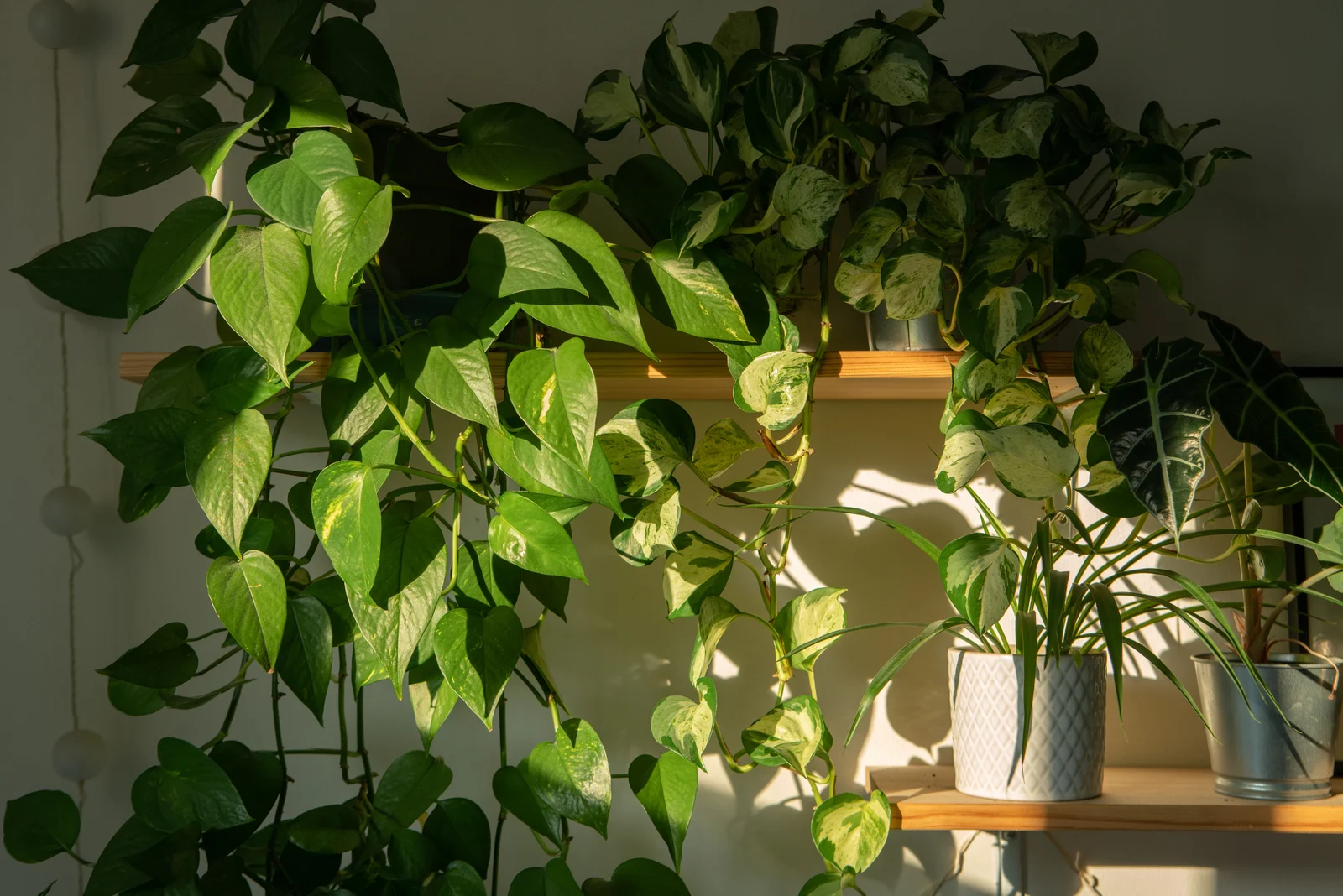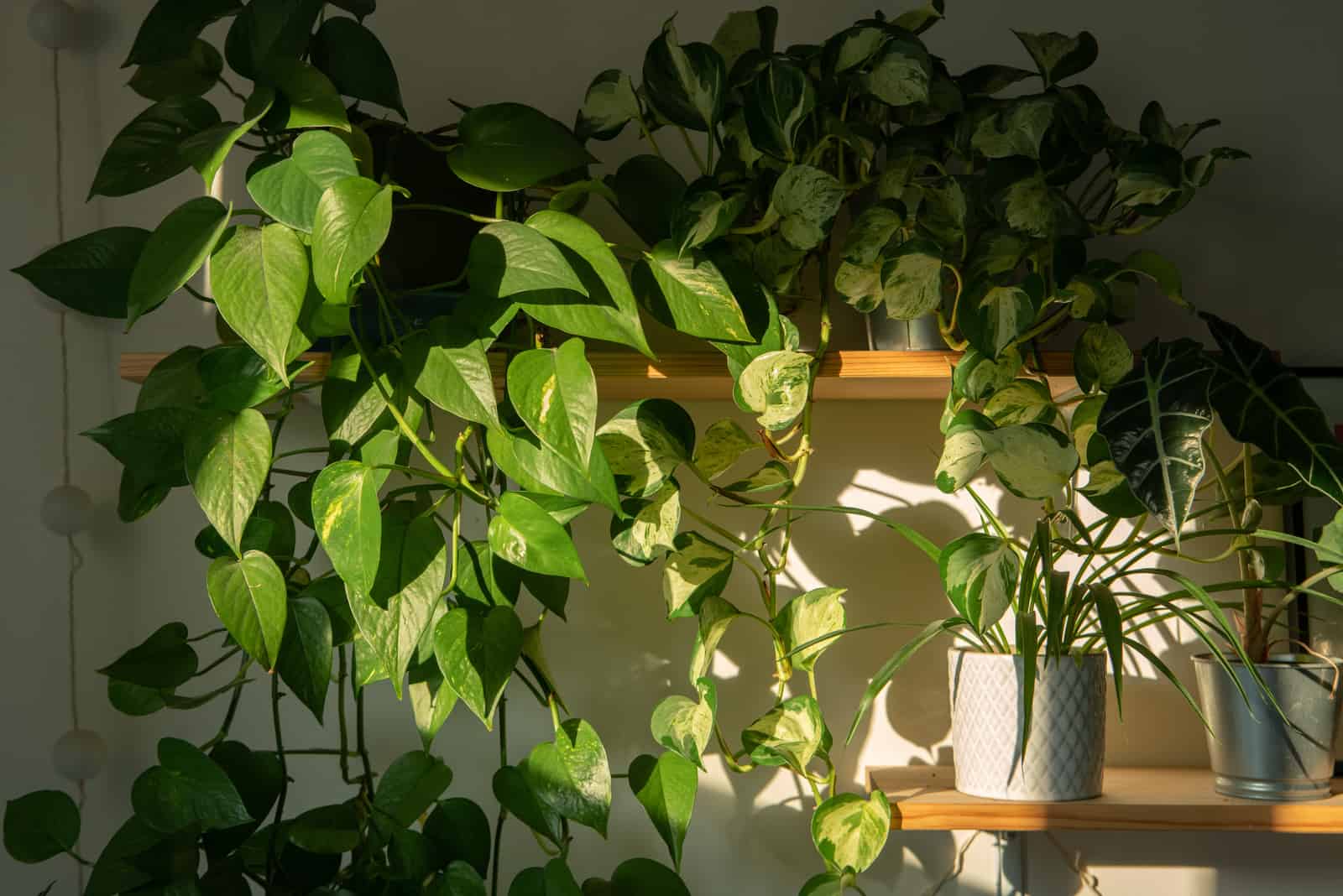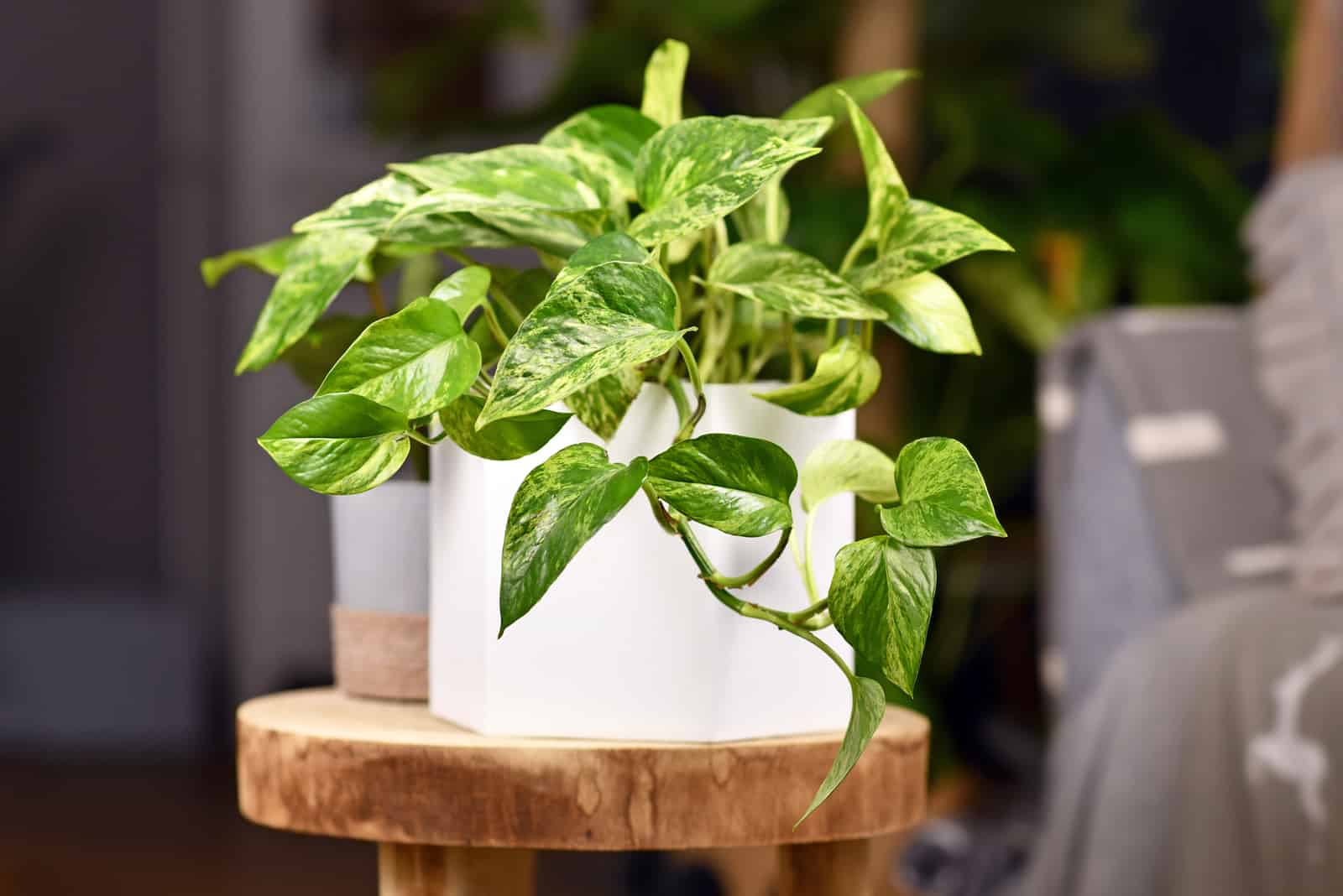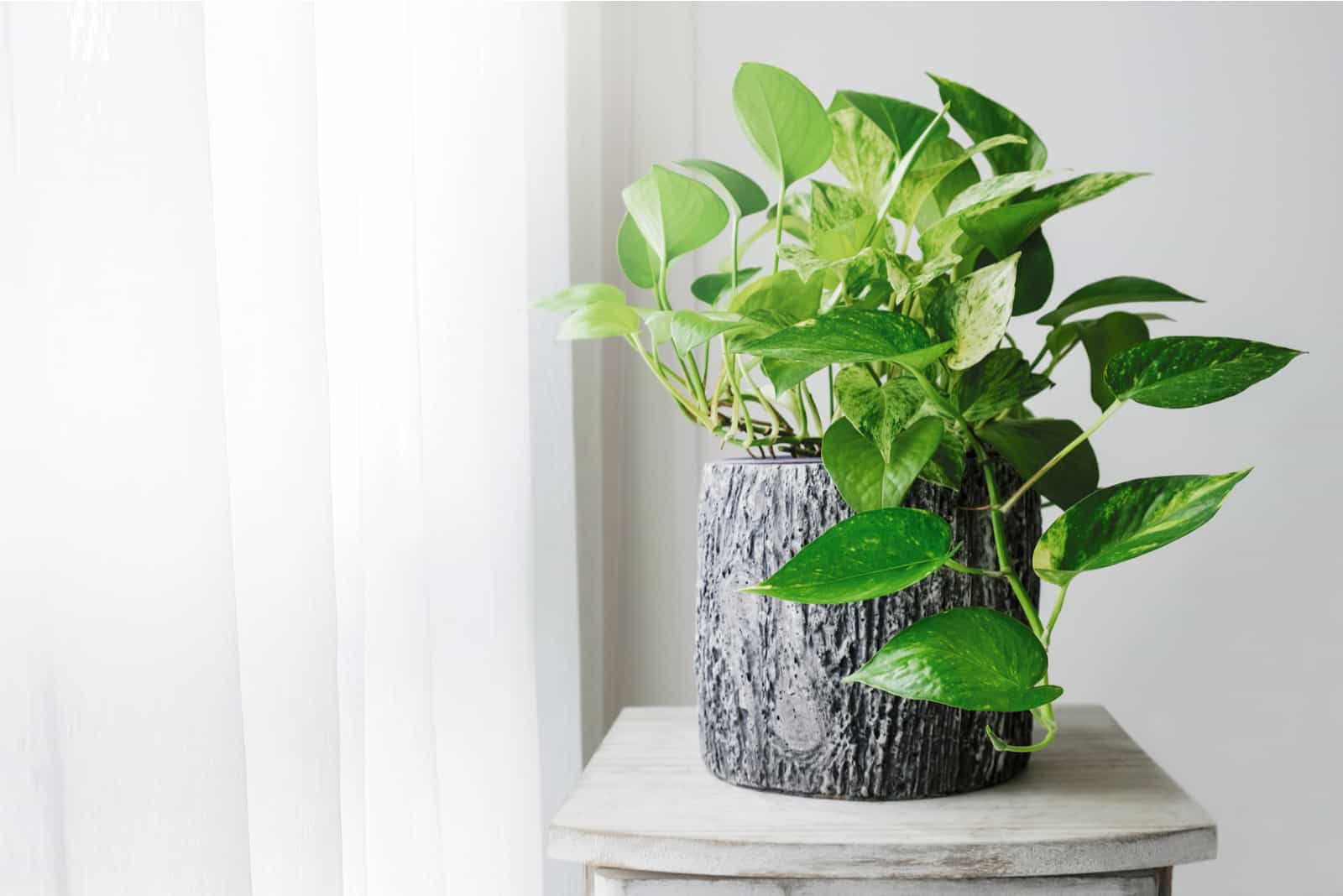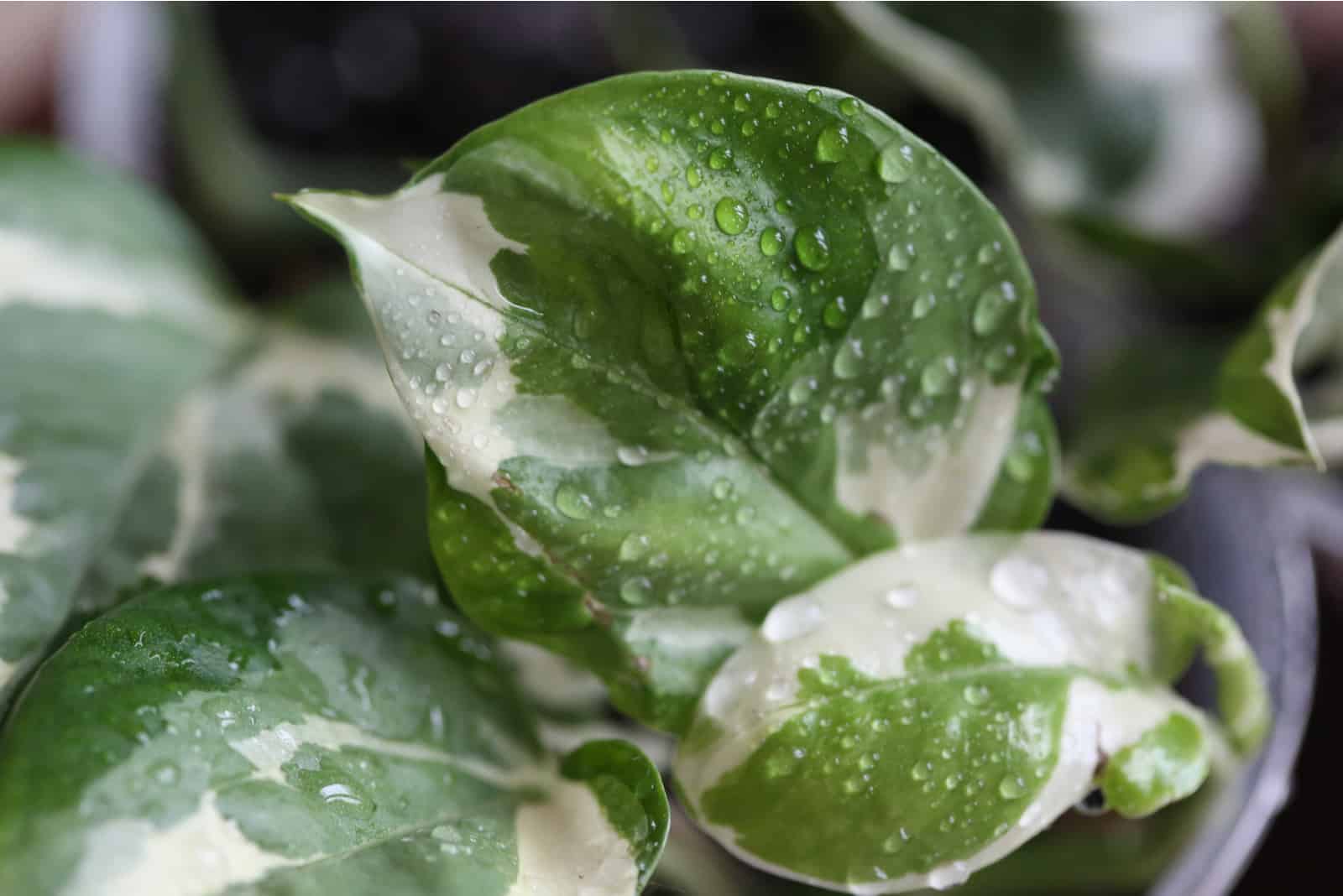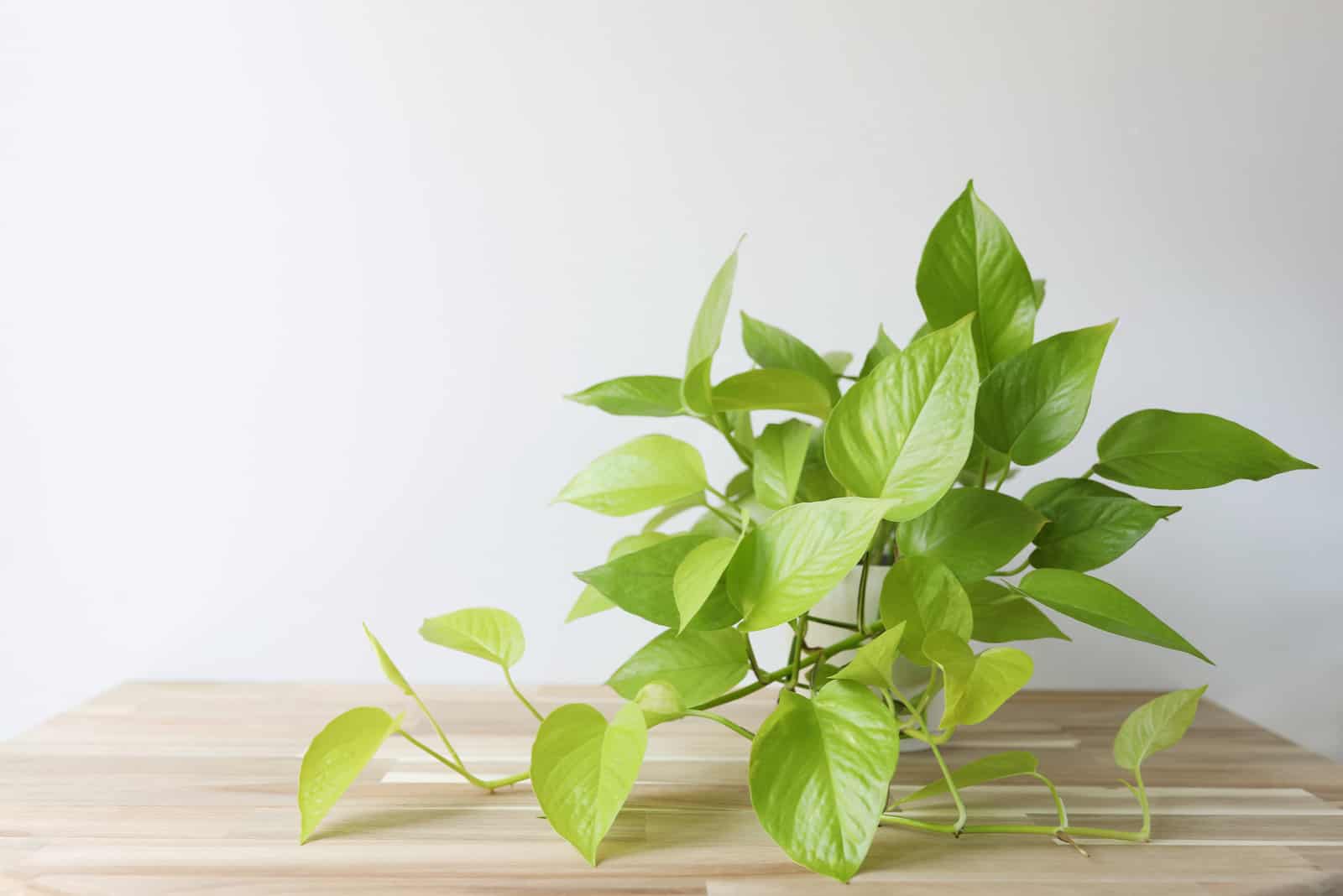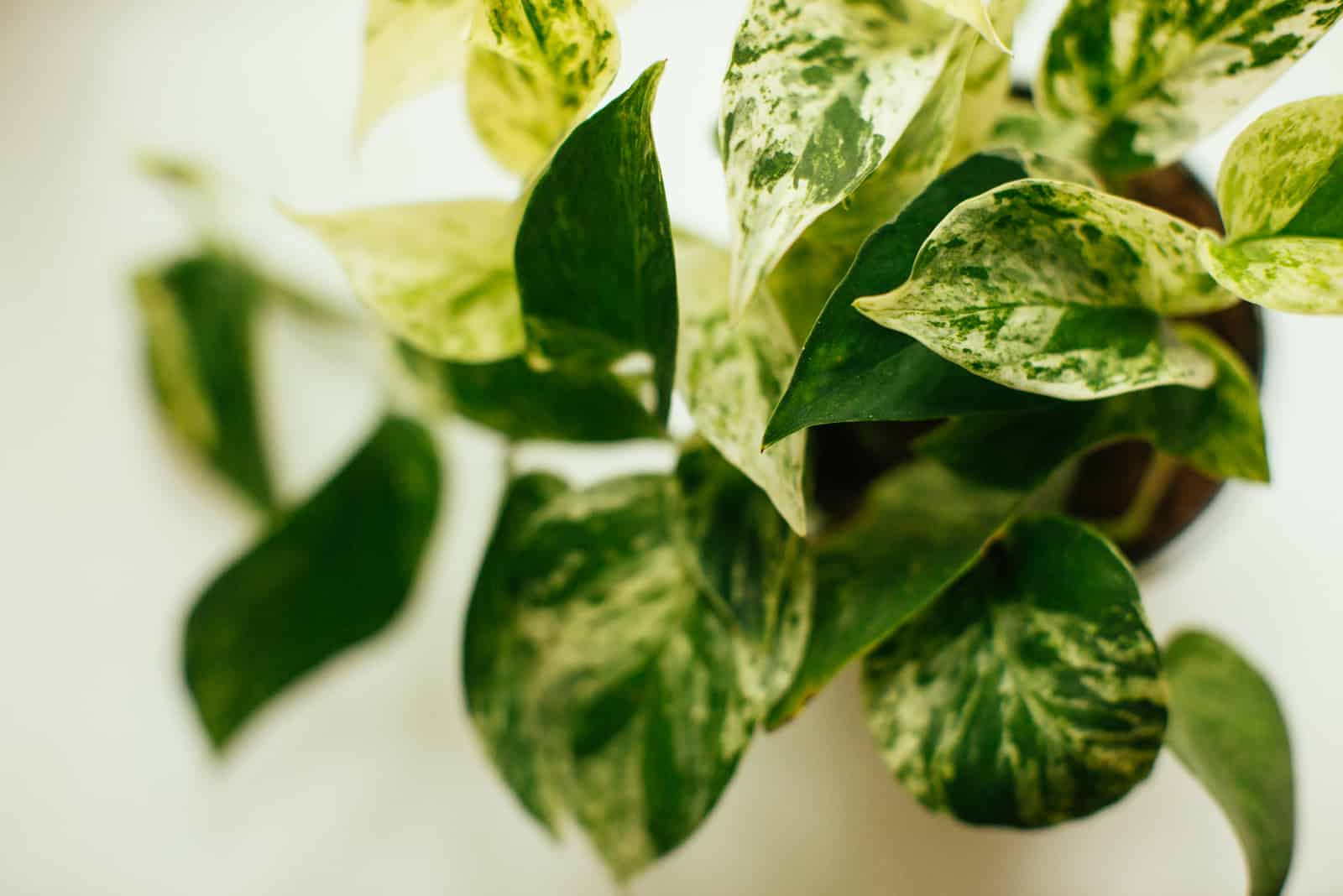Pothos plants are perfect indoor decorations that bring life and greenery to your home. They’re also low-maintenance, so you won’t have to constantly worry about feeding, pruning, and watering them.
These species are fast growers, but something may happen to hinder their development. They might be underfed (or overfed), or you may fail to grow them in a suitable potting soil or location.
There are several reasons why your pothos may not grow as fast as it can, and we’ll examine them all in the following sections.
Before we examine the causes of slow growth, let’s learn some basic info about pothos plants:
[table id=607 /]
How To Make Pothos Grow Faster
If you want to speed up the growth of your pothos plant, you need to plant it in a well-draining potting medium, keep it in a warm spot with indirect light, water it whenever the topsoil dries out, and occasionally fertilize it.
You should also mist it from time to time, clean its leaves of dust, and prune it. Repotting is also important since root-bound plants will experience stunted growth.
Let’s discuss these things in more detail, and learn what can happen if we don’t meet this plant’s requirements.
1. Choose A Proper Potting Mix
The best soil for pothos is well-draining, aerated, and slightly acidic with a pH level between 6.1-6.8.
The good news is that you can get this type of growing medium in almost any garden center, so you won’t have to make it from scratch.
But if you’re crafty, you can always prepare the potting mix yourself and ensure proper pothos growth.
There are many recipes out there, and you can try out a couple of them until you find the easiest one to make for your jade pothos (or any other plant you have).
You can mix two parts peat moss (or coco coir) and one part perlite and orchid bark. You can also add vermiculite and sand to the mixture if you want to make a larger batch.
Finally, if you want to make the mix more fertile, you can add a bit of compost to introduce nutrients, but don’t go overboard.
2. Expose Your Indoor Plant To Indirect Sunlight
Epipremnum aureum plants require bright indirect light to flourish. If you keep them in harsh direct sunlight, it will burn their gentle foliage. And if you place your pothos in low-light levels, it may lose its beautiful variegations, become leggy, and stop growing.
Scorched leaves lose the green surface necessary for photosynthesis, and plants in the dark don’t get enough sunlight to engage in that process.
Therefore, you should keep your plants near east or south-facing windows since these locations provide direct light during morning or late afternoon hours when the sun isn’t that strong.
You can also keep it near west-facing windows, but move it a couple of feet away from it or use a sheer curtain to filter the light.
Finally, if your apartment faces north, you can always use some grow lights for your beautiful Marble Queen pothos.
3. Use Balanced Fertilizer For Houseplants
Pothos plant care involves feeding your green buddies with fertilizers that contain balanced ratios of nitrogen, phosphorus, and potassium.
You can always use compost if you prefer natural sources, or add liquid fertilizers every 4-6 weeks. Slow-release fertilizers are also safe for pothos plants, and they usually last for 3-4 months.
Feed this tropical plant throughout its growing season, water it thoroughly after fertilization, and you’ll witness its fast growth in no time.
4. Keep It In Suitable Temperatures
Many gardeners have wondered “Why is my pothos not growing when I have given it everything it needs?”. Well, it could be that you aren’t growing it in preferable weather conditions.
This plant loves warm temperatures between 70 and 90 degrees Fahrenheit. It could survive temperatures down to 40 degrees Fahrenheit, but at that point, you won’t see much growth.
Such low temperatures are dangerous for this genus, so make sure that they never drop below 50 degrees.
And if we look at the care guide for the pothos Njoy (and other cultivars), we’ll see that this plant hates temperature changes. Therefore, keep it away from drafty areas such as doors and hallways, old windows, AC vents, heaters, etc.
5. Maintain Desired Humidity
The Pothos is a tropical plant, which means it thrives in high humidity levels (between 50-70%). Average household air moisture is between 30-40%, therefore, you should use a humidifier or mist your devil’s ivy from time to time in order to keep it healthy.
Low humidity levels can lead to leaves curling and browning of the tips and margins, which may affect photosynthesis and make the plant weak.
6. Water The Pothos
The best care tip that we have regarding watering potted plants, is to do it once the top 2-3 inches of the potting medium are dry.
This way, you will avoid overwatering your plants and risking root rot. The main signs of an overwatered pothos are stunted growth, droopiness, and yellow foliage.
In the case of root rot, you should take your plant out of its planter, expose its roots, and remove any that are dark and soft.
Overwatering will also make your plant weak and susceptible to pest infestations by aphids, gnats, and spider mites.
Underwatering isn’t as dangerous as overwatering, but it can lead to leaves curling, slow development, and droopiness. Therefore, using the right amount of water is essential for proper plant growth.
7. Clean Your Indoor Plant
Pothos leaves are somewhat large, and as such, they collect dust indoors. It is vital to wipe them at least once every week because these tiny particles will form a layer and hinder photosynthesis.
You can clean the foliage with a damp cloth, mist and wipe them, use olive oil, a bit of dish soap, etc.
Olive oil will leave a beautiful shine, although dust will stick to the greasy surface more easily, so don’t use it too much or too often. Dish soap isn’t dangerous for plants if you use it just a bit, but you will have to wash it all off, which is why plain water is preferable.
8. Prune Your Pothos
There are many different types of pothos, and every beginner care guide includes pruning. To encourage new growth and a bushier appearance, you should cut above the node.
If you have an established plant that can take heavier pruning, you can always cut some stems to the base to promote branching.
You should also remove all dead, diseased, and old leaves since they only take up room where new growth could appear and exhaust your plant.
Another thing you can do to make your pothos appear lusher is propagate the cuttings in the same pot, which will make the crown look bushier.
Here’s a video that can help you achieve just that:
Use Pothos Cuttings For Propagation
Pothos propagation is quite simple; take the cutting, remove the bottom foliage, and plant it in a moist seed starting mix.
You can also dip the end of the cutting in a rooting hormone to facilitate growth. And if you don’t like soil propagation, you can always put your houseplant in a jar of water and wait for the roots to develop.
Expose your cutting to bright indirect light, keep the medium moist (or change the water whenever it gets murky), and keep the humidity levels high (you can use a humidity dome or a plastic bag to help you).
The roots will develop in a couple of weeks, and soon you’ll have new plants for your indoor garden.
9. Repot Your Plant
This houseplant has a fast growth rate, so you should repot it once a year to encourage development. If you don’t move it to a new container frequently, it can get rootbound and stop growing because the roots won’t be able to uptake water and nutrients.
The best repotting time is during its growing season (in spring or early summer) so that your plant can acclimate to the new conditions and put on some new growth before winter.
Finally, when repotting these houseplants, it is necessary to choose the right container. Pothos plants look amazing in hanging baskets, but you can also use a regular planter.
There’s also a never-ending conversation amongst gardeners about whether pothos plants need drainage, and the answer is yes!. You can grow these species in only water and LECA pebbles (or some similar medium), but then your plant will develop water roots that adapt to such conditions.
Pothos plants grown in soil needs a pot with drainage holes and a well-draining medium to thrive. You can also choose a terracotta planter since it doesn’t retain water as much as plastic ones.
FAQ
How do you make a pothos grow faster in water?
To increase pothos growth rate in water, you need to change it every couple of days. Your plant’s roots require oxygen in order to absorb moisture and nutrients.
Furthermore, you should add hydroponic fertilizers whenever you change the water for these houseplants, since this liquid doesn’t contain nutrients that your pothos can absorb (nor do LECA pebbles or any other inorganic material you use).
How do you make pothos leaves grow bigger?
The best way to encourage your pothos to grow large leaves is to train it on a trellis or a moss pole.
As well as this, you should care for your Jade, Snow Queen, Neon pothos, or any other variety properly. This includes exposing it to the right temperature and amount of light, watering it when the topsoil gets dry, feeding it regularly, repotting it, and maintaining high humidity levels.
Of course, there are always species that have larger leaves than others, and if you want to enjoy the prominent leaves of your pothos plant, go for a variety that naturally has bigger foliage.
Final Thoughts
“How to make pothos grow faster?” has been a question that’s puzzled us for quite some time; but no longer!
The best way to increase the growth rate of this houseplant is to expose it to indirect sunlight, water it only when the top couple of inches of the potting medium are dry, and fertilize it regularly with balanced fertilizers.
Keep your plant in proper temperatures and maintain higher humidity levels so that it can develop (just like you’d do for your philodendron).
You should also grow your pothos plant in a well-draining medium, prune it, and repot it once a year.
Cleaning its foliage is also important since the dust layer may prevent it from photosynthesizing properly.
Good luck with increasing your pothos growth rate, and until next time!

